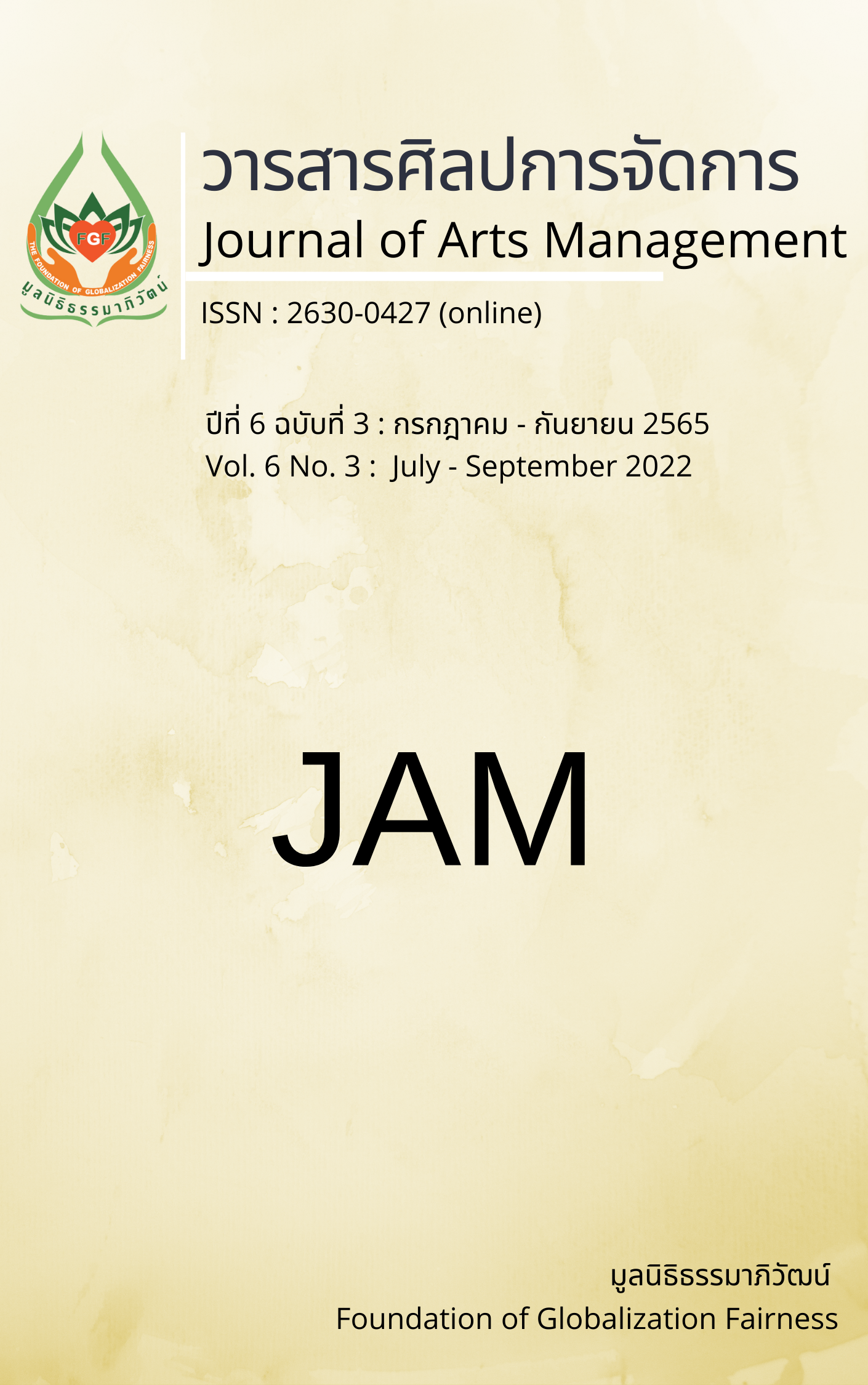The Factors Affecting Implementation of Green Human Resource Practices of Business Organizations in Thailand
Main Article Content
Abstract
Green Human Resource Management (GHRM) is one of the key strategies for modern business organizations to achieve business sustainability in a green economy. This article aimed to study the factors affecting green human resource management in business organizations in Thailand. This research was survey research and used a questionnaire to collect data. The population and sample consisted of 170 business organizations that have received certification for the Green Industry Standard. Data were analyzed using frequency, percentage, mean, Pearson’s correlation coefficient, and multiple linear regression analysis. The research results were found as follows:
1) Internal factors that include the organization's commitment, information, and communication systems have significant positive influence on some aspects of Green Human Resource Management practices.
2) External factors that include government policy significantly positively affected some aspects of Green Human Resource Management practices. The factors of the political and economic environment significantly positively affect all aspects of green human resource management practices.
Article Details

This work is licensed under a Creative Commons Attribution-NonCommercial-NoDerivatives 4.0 International License.
Views and opinions appearing in articles in the Journal of Arts of Management It is the responsibility of the author of the article. and does not constitute the view and responsibility of the editorial team I agree that the article is copyright of the Arts and Management Journal.
References
Ahmad, S. (2015). Green human resource management: Policies and practices. Cogent Business & Management, 2(1). https://doi.org/10.1080/23311975.2015.1030817
AnuSingh, L., & Shikha, G. (2015). Impact of green human resource factors on environmental performance in manufacturing companies: empirical evidence. International Journal of Engineering and Management Sciences, 6(1), 25-30.
Bantulnipit, P. (2017). Green Organization: Green Heart. Executive Journal, Bangkok University, 66-71. https://www.bu.ac.th/knowledgecenter/executive_journal/oct_dec_09_2/pdf/aw12.pdf
Gupta, H. (2018). Assessing organizations performance on the basis of GHRM practices using BWM and Fuzzy TOPSIS. Journal of Environmental Management, 226(22), 201-216.
Hosain, S., & Rahman, M. D. (2016). Green human resource management: A theoretical overview. IOSR Journal of Business and Management (IOSR-JBM), 18.
Malhotra, M. K., & Grover, V. (1998). An assessment of survey research in POM: from constructs to theory. Journal of Operations Management, 16(4), 407-425.
Margaretha, M., & Saragih, S. R. (2013). Developing new corporate culture through green human resource practice. The 2013 IBEA, International Conference on Business, Economics, and Accounting, Thailand.
Mashala, Y. M. (2018). Green Human Resource Management and Environmental Sustainability in Tanzania: International Journal of Academic Multidisciplinary Research, 2(12), 60-68.
Mehta, K., & Chugan, P. K. (2015). Green HRM in Pursuit of Environmentally Sustainable Business. Universal Journal of Industrial and Business Management, 3(3), 74-81. DOI:10.13189/ujibm.2015.030302
Ministry of Thailand Industry. (2021, March 11). List of certified business operators GI 1-5 (2021). http://greenindustry.diw.go.th/index.php/th/
Rani, S., & Mishra, K. (2014). Green HRM: Practices and strategic implementation in the organizations. International Journal on Recent and Innovation Trends in Computing and Communication, 2(11), 3633-3639. https://www.academia.edu/17635616/Green_HRM_
Practices_and_Strategic_Implementation_in_the_Organizations
Sakwa, S. M. (2018). Factors affecting implementation of Green Human Resource Practices in the civil service in Kenya[Doctoral dissertation, University of Nairobi].
Simachokedee, W. (2021, March 11). Green Industry with Plan 12, Green Network Magazine. https://www.greennetworkthailand.com/
Sreesai, S. (2014). Green Organization Development. Thai Journal of Public Health, 44(3), 219-222.
Sritharet, P., & Punyasiri, S. (2019). Causal structure of factors that influence green behavior of green hotel’s employees in Thailand. RMUTSB Academic Journal (Humanities and Social Sciences), 4(2), 22-139.
Suharti, L., & Sugiarto, A. (2020). A qualitative study of Green HRM practices and their benefits in the organization: An Indonesian company experience. Business: Theory and Practice, 21(1), 200-211.
Supmonchai, S., Phadoongsitthi, M., & Rompho, N. (2018). Business research (3rd ed.). Physics Center Press.
Tooranloo, H. S., Azadi, M. H., & Sayyahpoor, A. (2017). Analyzing factors affecting implementation success of sustainable human resource management (SHRM) using a hybrid approach of FAHP and Type-2 fuzzy DEMATEL. Journal of Cleaner Production, 162,
-1265. DOI:10.1016/J.JCLEPRO.2017.06.109
Ullah, M. (2017). Integrating Environmental Sustainability into Human Resources Management: A Comprehensive Review on Green Human Resources Management (Green Hrm) Practices. Maghreb Review of Economic and Management, 4(1), 6-22. https://www.asjp.cerist.dz/en/downArticle/138/4/1/11572
Yongvongphaiboon, N. (2021). Guidelines for The Development of Thai Steel Industry Management System Towards Becoming a Sustainable Green Industry. Journal of Rangsit Graduate Studies in Business and Social Sciences, 7(1), 15-29.


